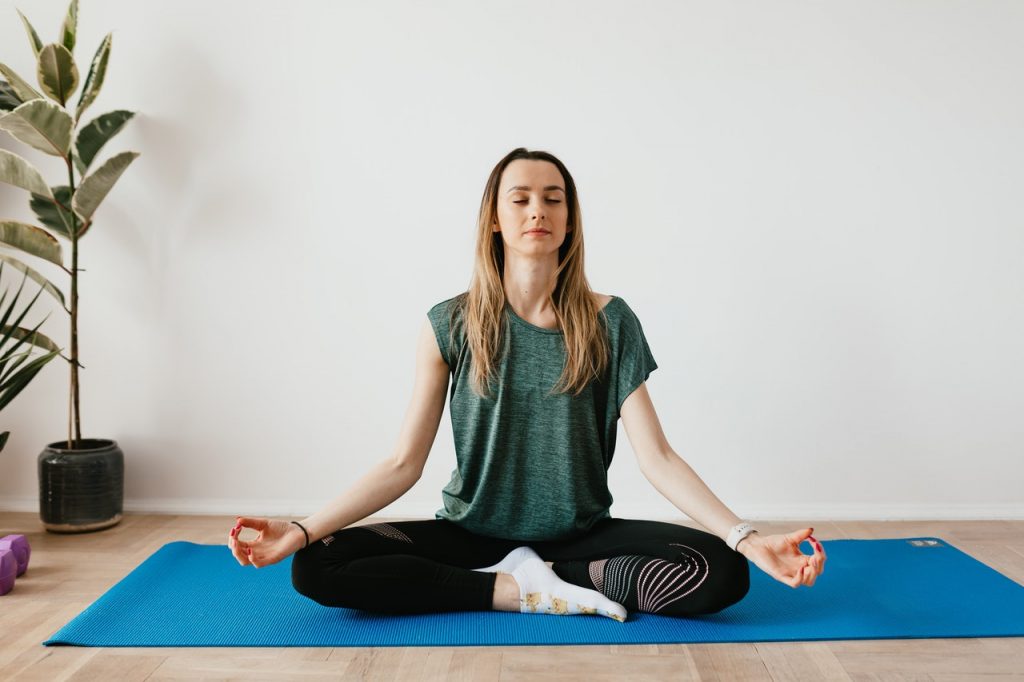Among the many varieties of yoga, kundalini yoga stands out because it involves the deepest transformations in a person. Shrouded in mystery, kundalini yoga aims to awaken and master the dormant energy in our body. Learn about this unique form of yoga.
Kundalini yoga reveals the original face of yoga. The purpose of practicing this form of yoga is to awaken kundalini – the all-powerful cosmic or sexual energy dormant in the lowest, sacred energy center of man. The practice of kundalini yoga is to help this vital energy move upward along the spine to the top of the head.
Master Yogi Bhajan developed and popularized this practice in California in the late 1960s to help westerners break addictions and awaken consciousness. Yogi Bhajan chose the most effective elements of yoga, based on methods used for thousands of years. Their proper practice benefits every person regardless of age, physical fitness or past.
The basic technique used in kundalini yoga is kriya, an active meditation that combines postures (asanas), hand gestures (mudras), breath (pranayama), a characteristic chant (mantra) and/or an object on which the mind is focused. The duration of the krijas, which are sometimes accompanied by music, varies from 30 minutes to an hour. Contrary to esoteric, slightly demonic ideas about kundalini yoga, its practice is very precise. Classes follow a similar pattern around the world.
Once you sit on your mat, you chant the opening mantra three times, through which you connect with your self and your inner guide. The sound dimension in kundalini yoga is important because it causes vibrations in us on a molecular level. In class, practitioners learn to find the sound in the navel and solar plexus area, which is our command center, and project it out through the voice. Accurate articulation of the mantra allows the tongue to move in a certain way and touch the energy points located on the palate.
Then comes the warm-up with special attention to the spine and the breath. In kundalini yoga it is the breath that gives rhythm to the exercises. We successively inhale, exhale and hold our breath, either by tightening or loosening the crotch.
When the body is fit, we move on to the main practice, which is kriya aimed at specific effects, both physical and mental. Teachers usually offer one kriya followed by two shorter ones. This is followed by meditation, either chanted or silent, and finally relaxation to the sound of gongs. During the class you will learn different kriyas, hundreds of them, each affecting a specific organ, gland or emotion. The teacher always informs the practitioners which area they are working on.
Unlike hatha or ashtanga, kundalini yoga does not require perfection in performing asanas. The essence of this type of yoga is to connect with your energy. Exercises are designed to awaken it and make it move slowly upward, through successive energy centers. The aim is to unite body, mind and spirit.
In kundalini yoga everything is interconnected, which is why it is also called the yoga of consciousness. Everything that comes into our interior – air, food, emotions – crystallizes within us and stagnates, creating knots through which energy cannot flow. According to the Hindu holistic view of health, this is the seed of emotional disorders, depression, and ultimately disease. Conscious and exemplary practice of kundalini yoga heals the human energy system, at the core of which are the chakras.
The kundalini energy is like a dormant snake coiled at the base of the spine. The kriyas mobilize it and help it ascend through successive energy centers, called chakras. Each chakra is connected to a specific endocrine gland: the ovaries, adrenals, pancreas, thymus, thyroid, pituitary, and pineal gland located at the top of the skull. The life energy cleanses these centers from the bottom up, and when it reaches the top, the crown chakra, it unifies our physical and spiritual self.

The opportunity for self-knowledge that kundalini yoga offers us is a blessing in times dominated by stress and rush. For some, kundalini yoga allows them to relax, regain sleep and stop the rush of thoughts. Others take pleasure in the chanting and elation brought by the collective wave of harmonious sounds. These mantras are sacred, having been chanted for thousands of years. Their conscious recitation raises vibrations, purifies, soothes, brings peace and joy.
Until recently only chosen people could practice kundalini yoga. Today it is within reach of everyone. However, in order for its practice to make sense one needs a desire to make a deep change in one’s life, to connect with one’s being.
Kundalini yoga is designed for every body, more and less mobile, and open to every level of experience. Actually in kundalini yoga there is no typical for other kinds of yoga division into beginner or advanced level. And no one should feel reluctant to enjoy its benefits.
Remember, the ultimate goal of kundalini yoga is not to improve physical fitness, but to get to know yourself better.
Main photo: Yan Krukov/Pexels